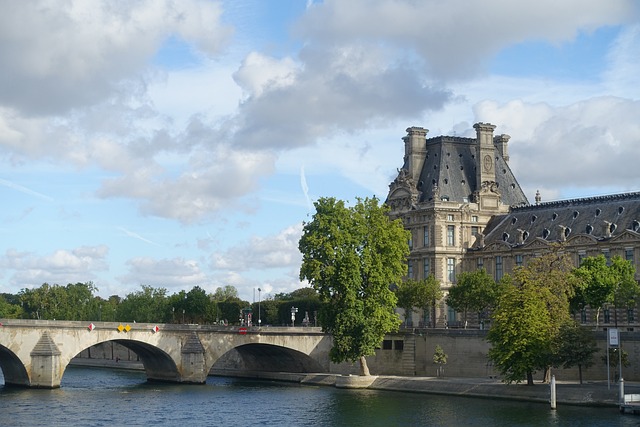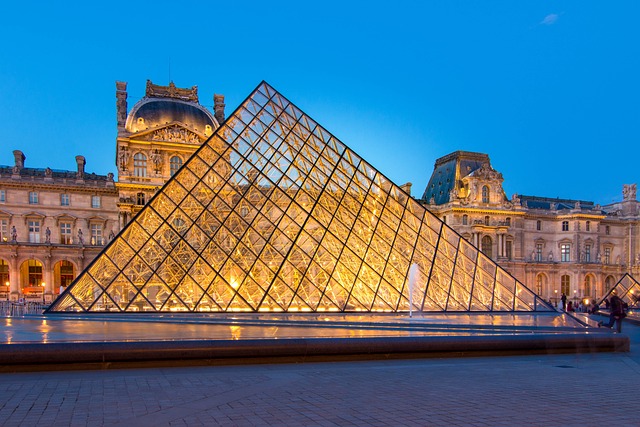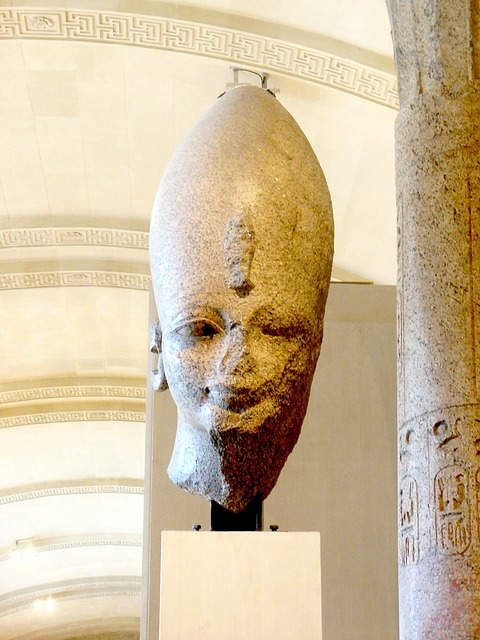A Journey Through History: The Louvre’s Timeless Legacy
The Louvre is not merely a museum; it is a monumental testament to art, culture, and history. Located in the heart of Paris, it is the largest art museum in the world, known for its vast collection of historic artifacts and masterpieces that span thousands of years. But what many visitors may not know is that the journey of the Louvre itself is as rich and fascinating as the treasures it houses. This article delves into the Louvre’s timeless legacy, exploring its historical transformations, artistic significance, and its enduring impact on culture and society.
The Origins of the Louvre
The story of the Louvre begins in the late 12th century when it was initially constructed as a fortress under King Philip II. The purpose of this fortress was to protect Paris from Viking invasions; however, it was not long before it transformed into a royal palace. Over the ensuing centuries, the structure was expanded and modified, reflecting the tastes and styles of its many royal inhabitants.
By the 16th century, under the reign of King Francis I, the Louvre began its transition from a fortress to a lavish royal residence. King Francis was a patron of the arts, and he invited renowned artists and architects to take part in the transformation. This period saw the addition of the Renaissance-style façade and various artworks, setting a precedent for the Louvre’s future as a cultural hub.
The Birth of the Museum
The true metamorphosis of the Louvre into a museum occurred during the French Revolution in the late 18th century. As the revolutionary fervor spread across France, the monarchy’s treasures were seen as symbols of oppression. In 1793, the Louvre officially opened its doors as a public museum, showcasing artworks that had been confiscated from royal collections and the nobility. This significant shift marked the beginning of the Louvre’s legacy as a guardian of art and culture for the public.
A Vast Collection of Art and Artefacts
The Louvre’s collection is nothing short of staggering, with over 380,000 objects spanning from antiquity to the 19th century. Among these treasures are some of the most famous works in the world. The museum is divided into eight departments, which include Near Eastern antiquities, Egyptian antiquities, Greek, Etruscan and Roman antiquities, Islamic art, sculptures, decorative arts, paintings, and prints and drawings.
The iconic Mona Lisa, painted by Leonardo da Vinci in the early 16th century, is perhaps the most recognized masterpiece in the world. Its enigmatic smile and intricate details have captivated millions of visitors and inspired endless interpretations. Other notable works include the Venus de Milo, a stunning ancient Greek statue, and the Winged Victory of Samothrace, a Hellenistic sculpture celebrated for its dynamic form and grace.
The museum also features esteemed artists such as Raphael, Michelangelo, Delacroix, and more, each contributing their unique perspective and style to the collection. The sheer scope of the artworks housed in the Louvre establishes it as a refuge of historic and artistic significance, appealing to art enthusiasts and casual visitors alike.
Architectural Evolution
As the Louvre grew in prominence, so too did its physical structure. The museum has undergone numerous renovations and expansions throughout its history. Each transformation reflects the architectural trends of its time while maintaining respect for its storied past. Notable architects such as Claude Perrault, who designed the iconic eastern façade, and I.M. Pei, who created the modern glass pyramid entrance in 1989, have left their indelible marks on the museum’s architectural identity.
The glass pyramid has become a symbol of the Louvre; its modern design contrasts sharply with the historical buildings surrounding it. This blend of the old and new showcases how the Louvre has embraced change, an essential characteristic of its legacy. The pyramid serves not only as an entrance but also as a point of intersection between the various layers of history that the Louvre embodies.
Cultural Significance and Global Influence
The Louvre’s impact extends far beyond its walls. It has played a crucial role in shaping cultural narratives, not just in France but around the world. Its collection has inspired countless artists, scholars, and historians. The museum’s commitment to education and outreach ensures that art remains accessible, engaging new generations and emphasizing its relevance in contemporary society.
Through various programs, exhibitions, and partnerships, the Louvre actively promotes cultural exchange. It collaborates with institutions worldwide, allowing for a greater appreciation of diverse artistic traditions. Special exhibitions featuring international artists and themes contribute to a global conversation about art, heritage, and identity. The museum is not merely a repository of art; it is a vital participant in the dialogue surrounding global culture.
Preservation and Challenges
As guardians of history, museums face the daunting task of preserving their collections against the ravages of time. The Louvre has implemented extensive conservation efforts to ensure the longevity of its artworks. Expert conservators utilize cutting-edge techniques and technologies to maintain and restore pieces, safeguarding the museum’s legacy for future generations.
However, the Louvre also faces challenges in the modern age. Issues such as climate change, the effects of tourism, and the evolving nature of art consumption present ongoing obstacles. The museum continually adapts its practices to address these concerns, recognizing that preserving its legacy involves not only care for its collections but also broader considerations for the global community.
The Future of the Louvre
As the Louvre moves forward, it remains committed to its mission to share the beauty and knowledge contained within its walls. Plans for expansion and renovation are ongoing, focusing on improving visitor experiences and enhancing accessibility. The museum’s dedication to innovation ensures that it will continue to serve as a beacon of art and culture, attracting millions of visitors annually.
The Louvre’s role in shaping our understanding of art and history cannot be overstated. Its timeless legacy transcends generations, inviting everyone to explore the wonders of the past and the possibilities of the future. In a rapidly changing world, the museum stands firm as a reminder of the enduring power of creativity and the universal language of art.
In Conclusion
The Louvre is more than just a museum; it is a journey through history. From its humble beginnings as a fortress to its current status as a world-renowned institution, the Louvre embodies the evolution of art and culture. With a vast collection, stunning architecture, and a commitment to education and preservation, the Louvre continues to inspire awe and ignite curiosity. Its timeless legacy will undoubtedly influence generations to come, ensuring that the journey through history remains alive and vibrant.


